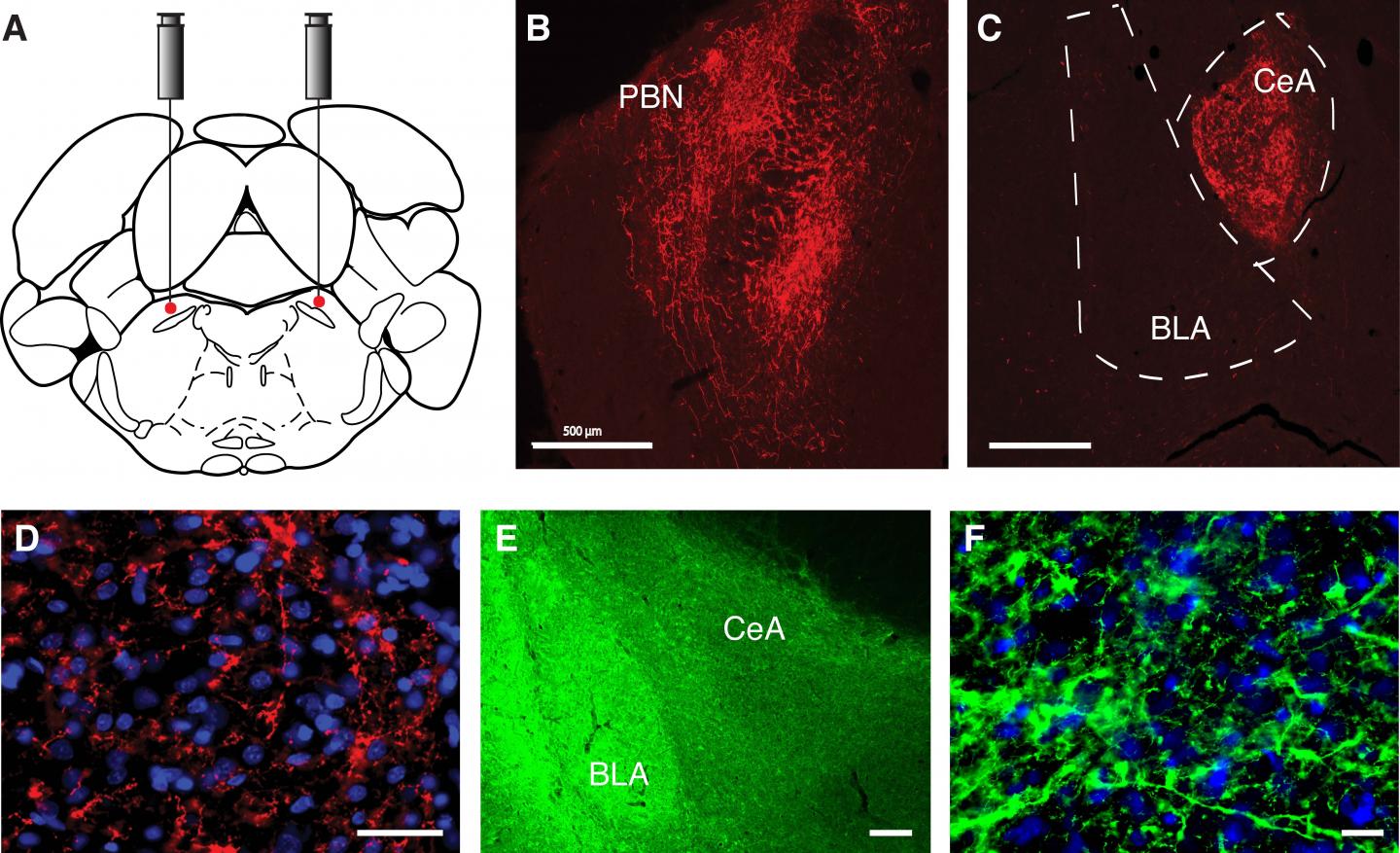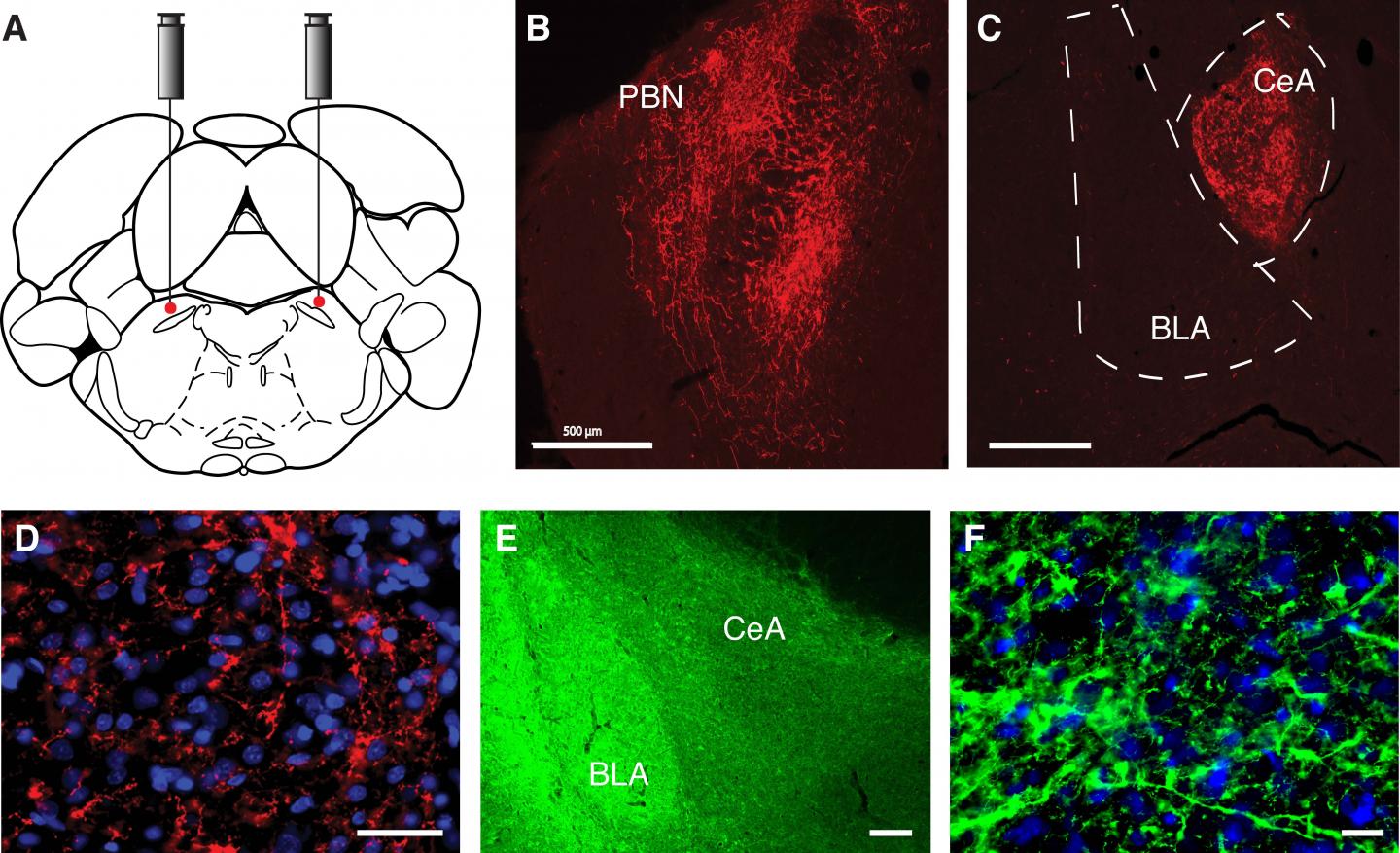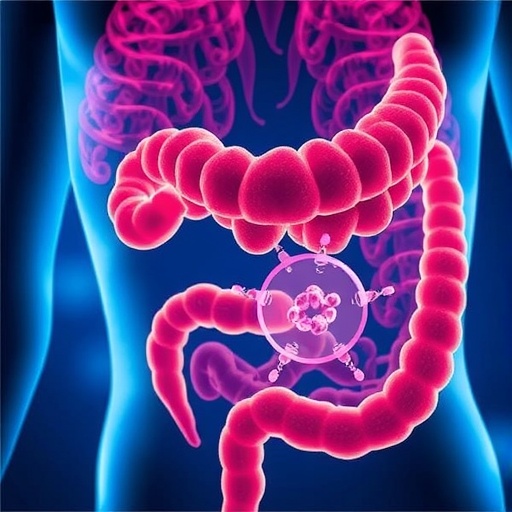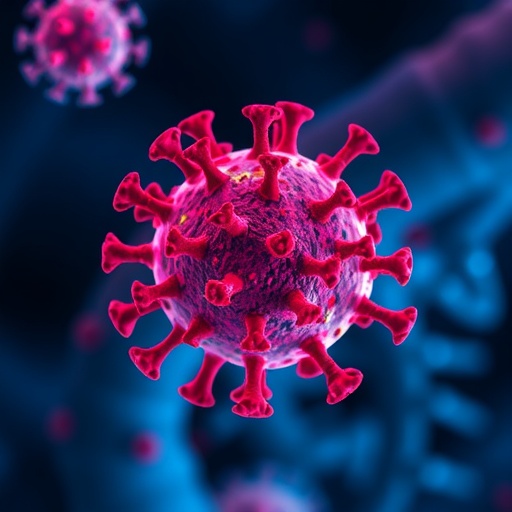
Credit: Cai et al., JNeurosci (2018)
Two pathways in the brain converging at the amygdala regulate the anxiety and depression that often accompanies chronic pain, suggests research in male rats published in JNeurosci. One of these pathways may represent a top-down mechanism that controls negative emotion under stress.
Using optogenetic stimulation, Zhizhong Pan and colleagues identify two opposing neural pathways — one that carries pain signals from the parabrachial nucleus to the central nucleus of amygdala (PBN-CeA) and another from the basolateral amygdala to CeA (BLA-CeA) — that integrate negative and positive emotion. Activating the PBN-CeA circuit generated anxiety- and depression-like behaviors in rats, even in the absence of physical pain, while activating the BLA-CeA counteracted each of these behaviors. These new insights into the complex relationship between pain and emotion may help to improve treatment of neuropsychiatric disorders that develop in patients suffering from chronic pain.
###
Article: Brain circuits mediating opposing effects on emotion and pain
DOI: https://doi.org/10.1523/JNEUROSCI.2780-17.2018
Corresponding author: Zhizhong Pan (The University of Texas MD Anderson Cancer Center, Houston, USA), [email protected]
About JNeurosci
JNeurosci, the Society for Neuroscience's first journal, was launched in 1981 as a means to communicate the findings of the highest quality neuroscience research to the growing field. Today, the journal remains committed to publishing cutting-edge neuroscience that will have an immediate and lasting scientific impact, while responding to authors' changing publishing needs, representing breadth of the field and diversity in authorship.
About The Society for Neuroscience
The Society for Neuroscience is the world's largest organization of scientists and physicians devoted to understanding the brain and nervous system. The nonprofit organization, founded in 1969, now has nearly 37,000 members in more than 90 countries and over 130 chapters worldwide.
Media Contact
David Barnstone
[email protected]
202-962-4000
@SfNJournals
http://www.sfn.org
Related Journal Article
http://dx.doi.org/10.1523/JNEUROSCI.2780-17.2018





